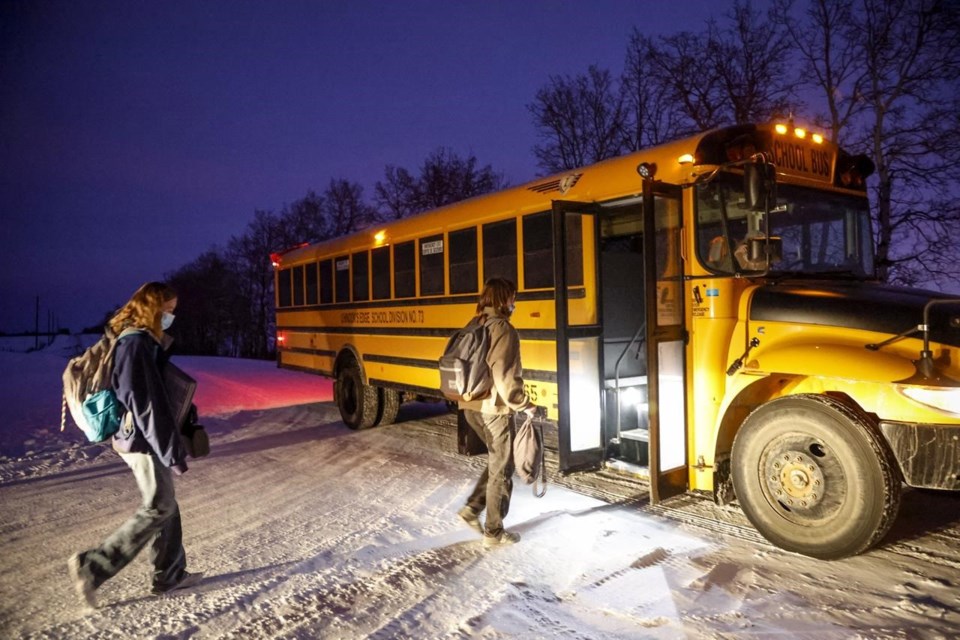Schools reopened across British Columbia and Alberta on Monday with slightly higher absence rates among students and teachers in some districts after a prolonged Christmas break because of the Omicron variant of COVID-19.
Stephanie Higginson, president of the BC School Trustees Association, said there were reports of higher-than-average absentee rates from some Interior schools, while most other areas had regular attendance levels.
"It takes a while for that type of information to go from the school to the district to the province," she said in an interview.
Ritinder Matthew, spokeswoman for the Surrey School District, said absentee rates varied across the area among students and staff.
Staff absentee rates were "a bit higher, but nothing unusual," she said. Student absentee rates were about four per cent higher than what it was in early December, she added.
"We are monitoring the situation at each school closely on a daily basis so our district can plan accordingly," she said.
School boards in Alberta said their biggest challenge remains finding consistent staffing levels.
The Calgary Board of Education said there were 681 vacant teaching spots with 208 of those left unfilled in the morning. Five classes had to be shifted to online learning later in the day.
Edmonton Public Schools, the second-largest school district in Alberta with more than 105,000 students, said there were 454 teachers and 252 educational assistants absent on the first day.
Matthew said the Surrey district has a "large pool" of teachers working on call and support staff who can fill in for absences.
"Our hope is that we can manage the situation, but we recognize that there is a risk that we may be short-staffed and may have to make some alterations within schools, including moving to at-home learning for a few days."
Schools are prepared for a shift to learning from home, she added.
Higginson and Matthew said the districts will have a better sense of the impact the Omicron variant is having on levels of illness by mid-week.
British Columbia's public health officer, Dr. Bonnie Henry, said last week getting children back to classrooms was essential and schools need to stay open for the emotional, physical and intellectual well-being of students.
B.C. education minister was not immediately available for an interview on Monday.
Jason Schiling, president of the Alberta Teachers' Association, said more information will be made available in the coming days but he heard from one colleague about a school that was missing four teachers, so they had to double-up classes.
"Doubling classes concerns me as well because now, all of a sudden, you go from having 20 to 25 kids in the class to 50 kids," he said.
"We keep being told to social distance, wear your mask, do all of these things and how do you do that when you have 50 kids in the class?"
Caroline Colijn, a mathematician and epidemiologist at Simon Fraser University, said it is difficult to know the impact Omicron is having in schools because there are a lot of uncertainties, including B.C. reaching its testing capacity.
Previous modelling and data analysis showed that school exposures typically don't lead to much further transmission but that could change with the Omicron variant, Colijn added.
Schools reflect what is happening in the community and high community transmission rates may be mirrored in classrooms, she said. And while exposures in schools may not lead to severe disease, there may be more and larger clusters and outbreaks than what has been seen, she added.
"The full extent won't be visible for a few weeks because not all of those transmissions will happen right away."
This report by The Canadian Press was first published Jan. 10, 2022.
The Canadian Press



